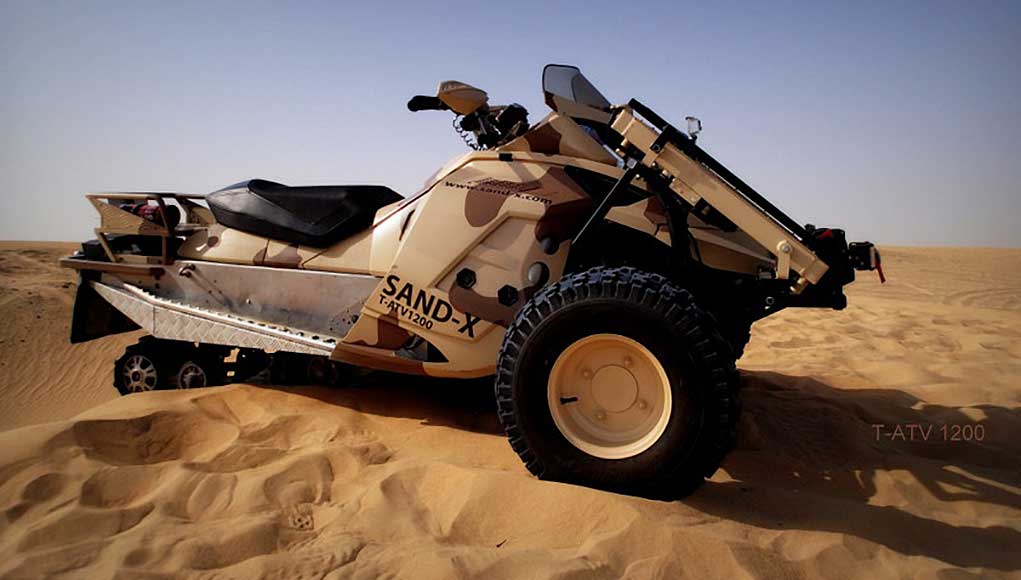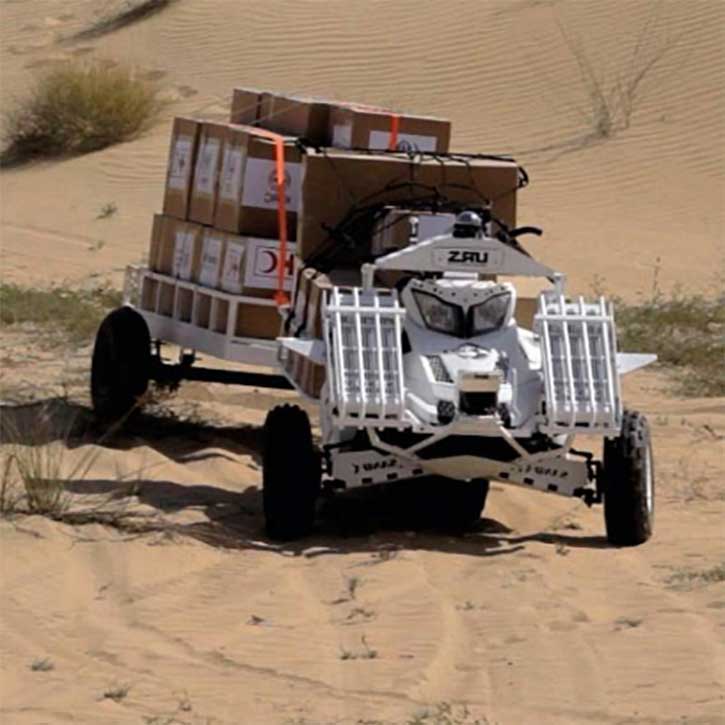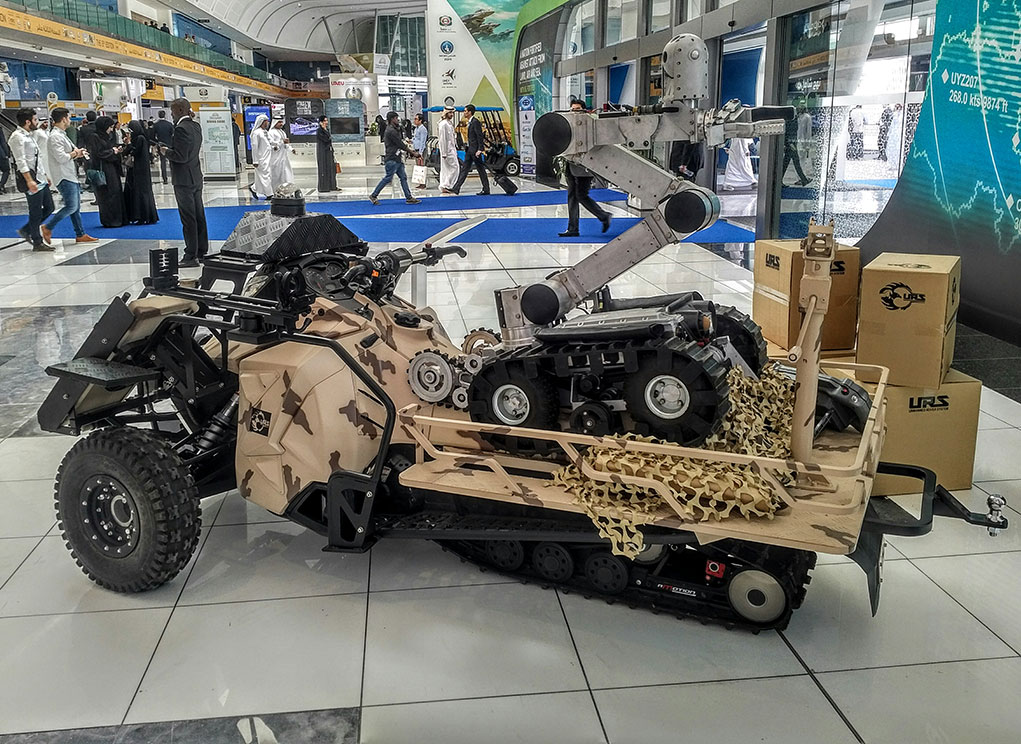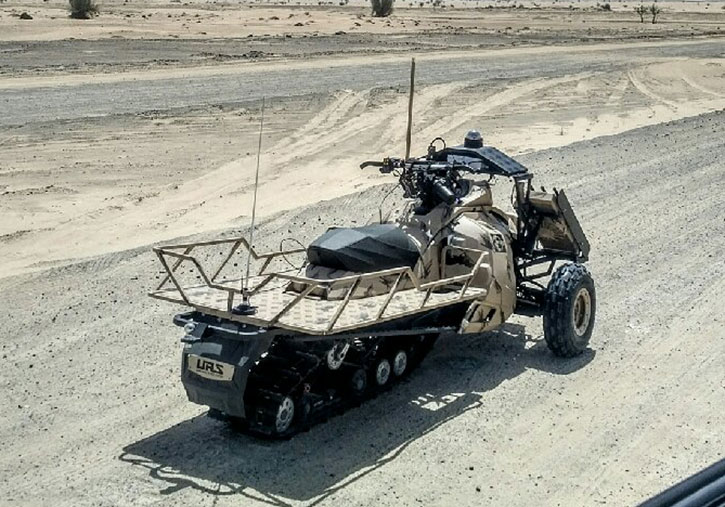
Sand-X Motors and URS Laboratories Switzerland have launched an unmanned version of its Tracked All-Terrain Vehicle (T-ATV 1200). The vehicle has demonstrated excellent mobility in all terrain, from sand dunes, snow and ice to mud and rocks, the combination of low center of gravity, that minimizes the risk of rollover. With a curb weight of less than 250 kg, T-ATV has a maximum payload of 450 kg (1,000 lbs).
In service with more than 40 countries the T-ATV can replace different vehicle families such as snowmobiles and ATVs with a common platform that offers improved performance, capable of travelling over rough terrain and operate reliably in all year and on all terrains.
The ground pressure of T-ATV is much lower than human on foot or vehicles – Whereas a wheeled ATV or quad bike has 0.73 km/cm2, and human male 0.55, a ground pressure of T-ATV is merely 0.04 kg/cm2. This makes it particularly useful for mobility over snow and sand, where it races to a maximum speed of 180 km/h.
Moreover, unlike wheeled or double-tracked vehicles, T-ATV does not need any ground clearance, as it practically crawls on the obstacles with the Kevlar-rubber tracks. In fact, T-ATV in cross-country movement, T-ATV can travel to its destination in a straight line, overcoming most obstacles that would hinder the mobility of other SUV or ATVs that need circumventing most obstacles.
With the combined wheel-track propulsion it can safely move on roads at high speed, without restrictions Sand-X Motors introduced unmanned operation for T-ATV using the SMART URS Labs remote control system. Integrated with the basic vehicle configuration, SMART uses enable remote control using three-axis cameras, GPS tracking, two-way communications (voice and radio) and headset enabling the remote driver to control the vehicle remotely. SMART can establish a link between convoy vehicles and the unmanned lead formation, connect manned and unmanned systems with UGV and UAV and integrate several segments shared by different units in the same operating zones.

th On such missions, T-ATV can be used as an unmanned platform carrying smaller mission-specific UGVs (such as counter-IED), conduct route clearing as it moves ahead of a manned formation, operating ground penetration radars, and other IED sensors. It can also assist in logistic missions using the T-ATV itself and a trailer that doubles the payload carried by the system. and casualty evacuation in rough and dangerous terrain. Ballistic protection can be added to protect that injured person evacuated from a battle zone. Using its high maneuverability and cross-country mobility It can also be used to deploy smoke screens covering force movements.
T-ATV with URS Labs package is planned to be used as part of a border and critical infrastructure security system incorporating a Distributed Fibre Sensing (NG-DFS) system that detects smallest acoustic vibrations, including pipeline leaks, created by people or machinery working on or near a pipeline or fens. The sensors send the coordinated of the suspected incident to a sector control center where a manned or unmanned T-ATVs will be automatically dispatched to assess the situation.

The SMART kit controls the vehicle remotely in line-of-sight communications from a distance of up to 10 km, or Non-line of sight communications range is 4 km. Up to 10 vehicles can be intelinked providing repeater services to each other, extending control over 100 km. Alternatively, repeaters can be dropped from the vehicle (by operator command) to enable the range extension without committing T-ATVs. Unmanned T-ATVs can also operate autonomously using pre-programmed missions and navigation waypoints, with automatic ‘return home’ and ‘follow me’ functions.
If one unit is losing contact it automatically returns to the last point of contact using built-in low-level autonomy functionality relying on obstacle avoidance by LIDAR.






















